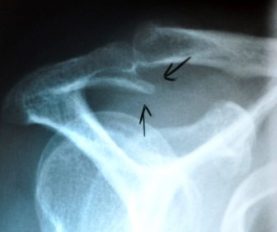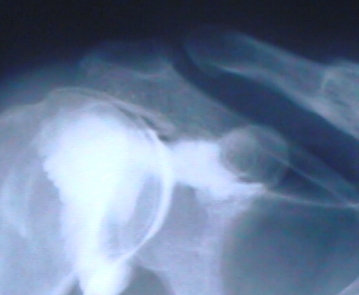Rotator Cuff Treatment & Surgery in Nebraska
If you're dealing with a torn rotator cuff, timely and proper medical treatment is crucial for effective recovery. At Nebraska Hand & Shoulder, we prioritize not only the repair of your rotator cuff but also your swift return to daily activities. Our commitment to your healing journey is at the heart of our approach.
With our advanced surgical techniques, we can minimize scarring and significantly reduce recovery time compared to traditional methods. Our expert surgical team is dedicated to providing you with the highest quality care. Schedule an appointment today to discuss your rotator cuff treatment options with our experienced staff.
More About Torn Rotator Cuff Injuries
Damage to the rotator cuff has become increasingly common, transitioning from a condition primarily affecting retirees in their late 60s and beyond to one frequently seen in individuals in their 50s and occasionally even in their 40s. In the 1980s, diagnosing a torn rotator cuff was a contentious issue, leading to many undiagnosed cases and causing significant suffering. By the 1990s, treatment methods evolved from open surgical techniques to arthroscopic procedures, which offered improved visualization. While technically more challenging, these innovations in surgical techniques and equipment enhanced the ability to address rotator cuff injuries effectively.
In the early 1980s, the latissimus dorsi and serratus anterior muscles, which become prominent in bodybuilders, began to see extensive use in microvascular reconstructive surgery. Portions of these muscles can be harvested along with their blood supply and nerves, allowing them to be reattached elsewhere in the body to fill large voids caused by trauma or tumor resections, all without sacrificing shoulder function. Since the late 1990s, the latissimus dorsi muscle has found limited application in reconstructing massive rotator cuff deficiencies to help stabilize the shoulder and enhance external rotation.
Torn rotator cuffs often result from vigorous activities, including falls. Many older individuals may not recall a specific injury, leaving it unclear whether this is due to poor memory or the gradual degeneration of the tendon that ultimately leads to rupture. Evidence suggests that both factors may contribute. Those with traumatic injuries typically present better tissue quality compared to those experiencing degenerative, spontaneous disruptions.
Controversy persists regarding the role of the overlying acromion in most patients with torn rotator cuffs. In some cases, a prominent acromion develops spontaneously, potentially rubbing a hole in the rotator cuff. For these individuals, a sudden, forceful movement can create a tear similar to cutting tightly held fabric with scissors; those affected often have a "type 3" acromion.

Type 3 acromion
WARNING: MAY CONTAIN GRAPHIC IMAGES
Diagnosis of a Torn Rotator Cuff
At the Nebraska Hand & Shoulder Institute, accurate diagnosis of a torn rotator cuff is crucial for determining effective treatment options. When a patient presents with persistent pain, particularly accompanied by weakness and loss of motion, further evaluation is warranted. The preferred diagnostic tools include an MRI scan or an arthrogram—both essential in confirming the presence of a tear.
In the past decade, MRI has emerged as the standard for diagnosing rotator cuff injuries. It not only confirms the tear but also provides detailed information about its size and the condition of the surrounding muscle, influencing treatment urgency and options. In some instances, tears may be too large or too old for surgical intervention to be beneficial, underscoring the importance of precise diagnosis for optimizing outcomes.
While arthrograms can be useful and cost-effective, they are less frequently utilized due to a higher incidence of false positives, which can inaccurately indicate a tear when the tendon is intact. However, they remain valuable for patients with pacemakers or other contraindications for MRI.
Additionally, the combination of MRI and arthrogram can enhance the diagnostic process, particularly in identifying rare glenoid labral abnormalities, often discovered during surgery for torn rotator cuffs. These labral issues are typically asymptomatic and unrelated to the patient’s primary complaints, further highlighting the expertise required for accurate diagnosis and treatment planning.
At the Nebraska Hand & Shoulder Institute, our commitment to leveraging advanced diagnostic techniques ensures that our patients receive the most accurate assessments and effective treatment strategies for their rotator cuff injuries.

Normal acromion
Timing of Rotator Cuff Repair
The timing of a repair largely depends on the individual's symptoms and overall health. The severity of symptoms is often linked to the size of the tear and the person's activity level. Interestingly, some individuals may remain unaware of significant issues; for instance, someone could have a large rotator cuff tear yet exhibit full range of motion and strength until a minor injury disrupts their balance and triggers pain. For these cases, treatment typically involves physical therapy and medication.
In contrast, a fresh, substantial rotator cuff tear (greater than 3 cm) accompanied by significant weakness and pain requires prompt and aggressive intervention, ideally within three to six weeks. Delaying the repair makes it increasingly challenging for the surgeon and reduces the likelihood of a successful outcome.
Rotator Cuff Surgical Results
Surgical results are influenced by several factors, including the patient's age, the size and configuration of the tear, and the timing of the repair. Larger tears in older patients have a decreased chance of complete healing. Research indicates that only about 75% of large rotator cuff tears heal effectively, particularly in older individuals or those who postpone seeking medical attention. However, between 80% and 90% of patients who undergo surgery for non-work-related torn rotator cuffs report very good to excellent outcomes.
In most cases of torn rotator cuffs, acromioplasty is performed not only to facilitate access for the repair but also due to the belief that a prominent acromion contributes to the tear's development. In fact, the prominent bone may be the primary source of pain rather than the rotator cuff tendon itself. Therefore, when evaluating a patient with shoulder pain, it's essential to consider the shape and prominence of the acromion.
Partial-Thickness Rotator Cuff Tears
I don't really like the term "partial-thickness tears" because generally, the tendons don't really look "torn", they just look "worn". There is a lot of fraying, and it doesn't have the robust appearance that a normal tendon has. On an MRI scan, the tendon looks thinner, and it is sometimes hard to discern whether there is a hole straight through it or if it is just within the tissue. There is a raging debate as to whether this should be totally ignored at the level of the tendon with all of the attention given to the overlying bone or whether the thinned portion should be removed (resected) and the remaining edges sewn together and down to the bone. It is a very big commitment to a patient to have a rotator cuff repair because she is tied up in a sling for a minimum of a month and limited in her activity for at least three months. This is not only a practical problem in getting dressed and getting about with activities of daily living (ADLs), but it can be extremely costly limiting a person's ability to produce for her family (farm, construction, etc.). There is also a fair amount of discomfort involved for a few days after surgery.
Another controversy is the risk of a "partial-thickness tear" going on to a "full-thickness tear". I personally think that we are best to treat the patient's prominent bone, i.e. eliminate the impingement syndrome, and monitor the patient because one only has to be off work for a couple of days and regain full motion over a week or so very quickly if we just trim the bone (acromioplasty). The cost in both loss of function and finances is much less with acromioplasty with or without outer collar bone removal for associated acromioclavicular arthritis when compared with other traditional surgical methods.
Work-related Rotator Cuff Injuries
Patients treated under the auspices of worker's compensation in most orthopaedic offices across the United States report poor outcomes. In my office, the outcomes have typically been as good as those achieved with the private sector (90% good or excellent) but the work in getting the person there has been much more difficult with a lot more coaxing and prodding of the patient.
It is generally believed that this dichotomy is due to psychosocial factors in the person blaming the problem on their job. They may be disgruntled and poorly motivated to return to their regular job and ultimately there is an effect of an impairment rating which some people are looking for to supplement their regular income, the "Dollar Poultice effect". Thus, in reviewing the results of rotator cuff surgery, like any treatment offered to patients who consider themselves "injured workers", we have to scrutinize the results carefully. Thus, there has been a big emphasis on separating out subjective and objective complaints, changes in range of motion or strength vs. pain or loss of function which is subjective, and this applies to the most recently used impairment manual from the AMA Guides for Evaluation of Permanent Impairment, 6th Edition.
Poorly Conceived Treatment
Occasionally a technique for which there was a lot of enthusiasm gets pushed to the wayside because of the limited benefit and high risk (eg, thermal capsulorrhaphy). This was introduced as a way of tightening up capsular laxity and reducing pain. Presumably, the heat applied causes local pain and nerve fiber removal. Unfortunately, the heat also kills cartilage cells, often eats up too much capsule and creates a worse problem.



